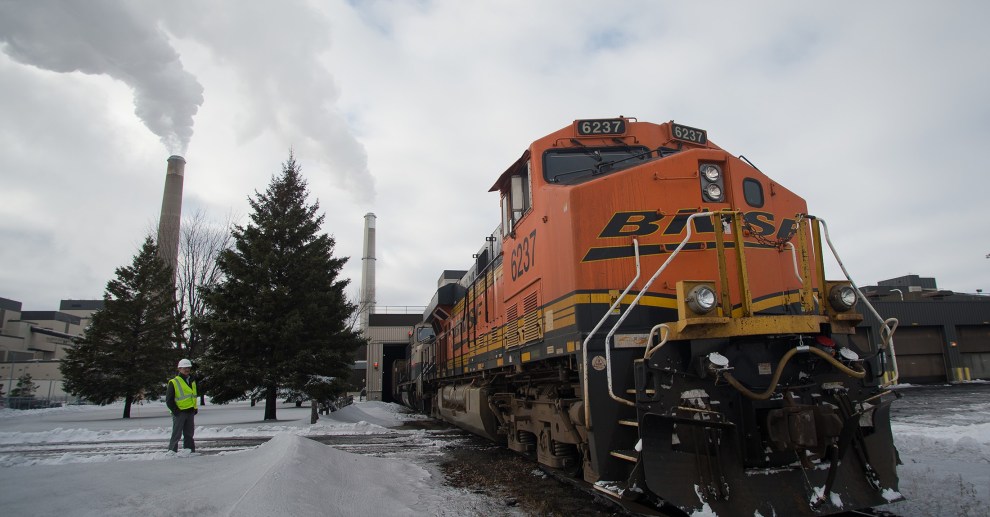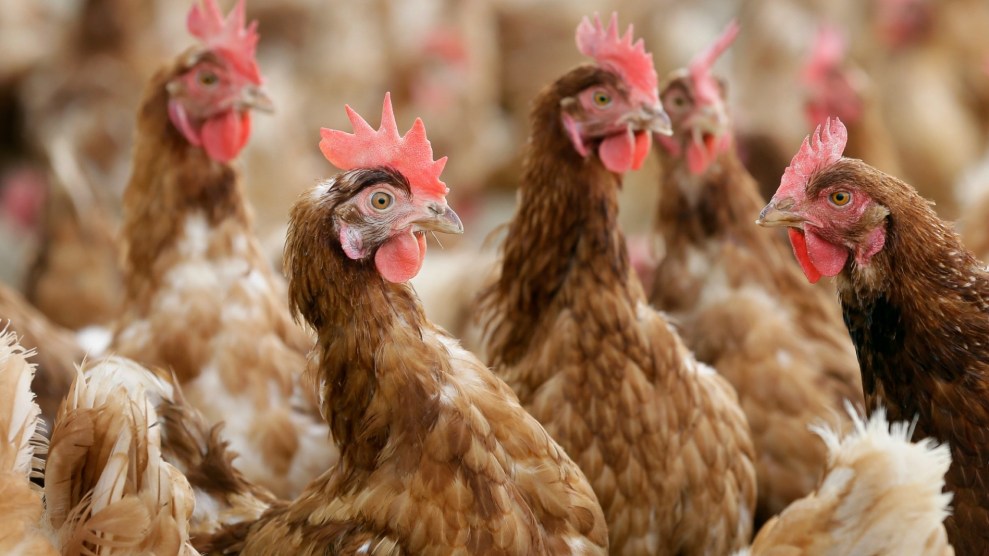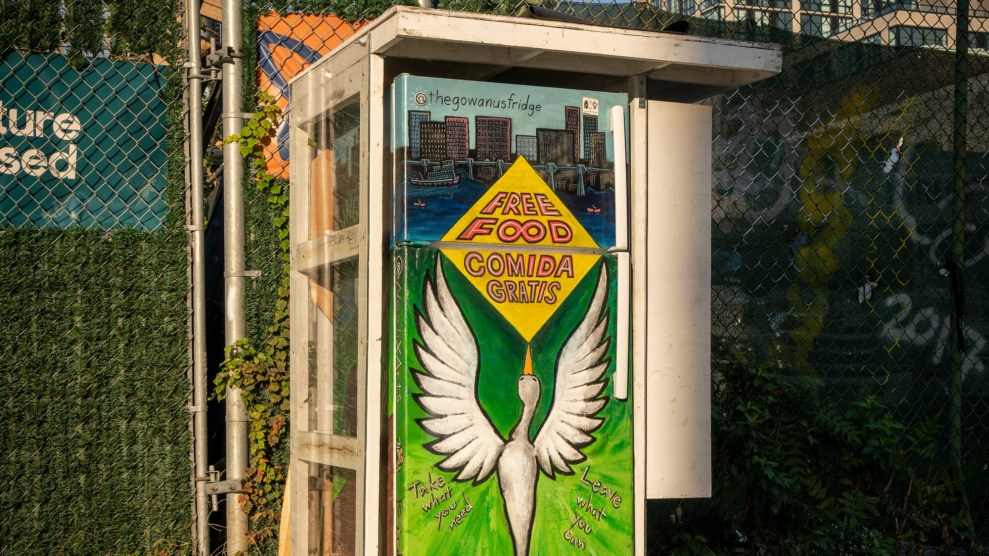As recent headlines from Niger show, the world has not yet figured out how to stop famine and devastating hunger among the very poorest. More than enough food is grown worldwide to feed everyone on the earth, but according to the United Nations World Food Program, disasters such as war, crop failure, or drought—combined with structural problems such as poor governmental decisions, bad transportation, and brutal poverty—all conspire to keep one in seven people in the world hungry, and one in three children underweight.
The Institute for Agriculture and Trade Policy (IATP), a Minneapolis-based research and advocacy group, recently released a report taking the United State’s food aid polices to task. Sophia Murphy, who co-authored “U.S. Food Aid: Time to Get it Right” with Kathleen McAfee, argues that the country’s food aid system is need of major reform. The problems stem from one crucial fact: aid policies were set up to benefit American business interests, rather than constructed to deliver aid effectively. The report finds U.S. expenditures highly inefficient, while failing to give adequate attention to promoting long term food security in recipient nations.
Mother Jones recently spoke with Murphy, who directs the IATP’s Trade Program, about the report and the reforms it recommends.
Mother Jones: Can you define the different types of food aid?
Sophia Murphy: Food aid includes any donation given to people who don’t have access to food in other ways—because they’re poor, or their own crops have been destroyed. In the case of aid from the United States, it’s either food that has been bought in the U.S. and shipped over, or it’s cash that the U.S. gives to a country or a relief agency so that they can go buy food from somewhere else. Usually it’s charitable.
There are three broad kinds of food aid. “Program” food includes government-to-government transfers of food, given as a form of economic support. There’s “emergency” aid—which is what we’re seeing right now in Niger, and saw in the wake of the tsunami—where about half of the U.S. food aid budget goes. And then there’s “project” food aid which is either given to assist long-term food programs, or else it’s allowed to be monetized—meaning that the aid can be sold in order to raise funds for operations or other development projects. By law, the U.S. government can only give 25 percent of its food aid as cash—the rest must actually be shipped as food. And the vast majority of that food must be grown, processed and packaged in the United States.
As well, the United States—almost uniquely—also sells food as parts of its “program food” aid. It offers other countries terms that are less than the commercial rate, and the recipient government can pay the aid back over 30 years, which is a very generous rate. The recipient government can then turn around and sell that food in the market in their country, and then they use the money they make off the sale to support other budgetary expenditures.
MJ: That’s interesting. So the United States can actually sell food and call it aid?
SM: The U.S. is pretty much alone in selling food aid. South Korea occasionally sells food aid to North Korea, but that’s the only other example. And this kind of aid used to make up the majority of American food aid, though it’s dropped to comprising about 10 percent of all food aid. But it’s still there, and it still goes out. It’s pretty contentious. So there is pressure to see the program food aid component ended. It’s an anachronism. Most donor governments are trying to rule it out, saying that if you sell food aid, it’s no longer food aid, and it should count differently.
MJ: What do you mean count differently? Who is counting?
SM: Well, the major donor countries are members of something called the Food Aid Convention, and at this convention they declare the minimum amount that they plan on donating—although they set this level so low that there is really no danger of missing it. The real issue is that European nations like France—who have been criticized for their large agricultural subsidies—are in turn pointing fingers at the United States’ program food aid, claiming that it’s essentially an agricultural subsidy. That issue has held up the most recent convention, and there’s some chance that the debate will be settled in the WTO. I think that would be very bad, however, since the WTO’s power is distributed based on the basis of its member nation’s economic power. That makes it a poor forum to make decisions about food aid.
MJ: How did the U.S. develop its current food aid policies?
SM: These programs were set up in the 1950s, with an eye towards Cold War diplomacy in the Third World. The United States had post-war agricultural surpluses, so American food sellers were interested in developing future markets for their goods, while still getting paid for extra yields. So altruistic concerns were somewhat secondary.
MJ: Why do places like Sub-Saharan Africa have serious food security issues?
SM: That’s a very complicated question. In addition to contemporary political factors, it goes back to colonialism, which essentially geared these economies for extraction. Then in the immediate postwar area, governments were eager to build up industrial sectors in these countries, so the development of indigenous agricultural capabilities lagged behind—especially so long as these African countries could rely on Cold War food aid.
Later on, many African countries had to liberalize their agricultural commodity boards as a condition of getting loans or other forms of economic assistance. Certainly these boards were often corrupt, or mismanaged or had other serious problems. But as national entities, the boards did a fairly good job at allocating resources to remote parts of the country. If you’re a Malian cotton farmer and don’t live near good transport, an international cotton buyer isn’t going to invest in your crop, he’ll go elsewhere. But your nation’s commodity board might have invested. The boards provided other supports that the private sector just hasn’t found cash-worthy, like agricultural extension services. And now that they’re gone, in many cases it’s hurting both domestic food production, and production of export crops that could be used to buy food abroad.
MJ:What are some of the biggest problems with the United States’ current food aid system?
SM: It’s very inefficient. For about every two dollars spent, only one dollar’s worth of food actually reaches a recipient. The bulk of money spent is actually used to buy crops and ship them abroad, even if cheaper crops can be found closer to the recipient population. And shipping crops is very expensive, not to mention slow.
Cash aid, which is far more efficient, accounts for under 10 percent of the food aid budget. The Bush Administration tried to double that amount, but Congress didn’t approve.
MJ: So what kind of reforms does your report call for?
SM: Well, the biggest step would be to move to a cash-based aid system, without the usual requirements that the crops come from the U.S. Donors should try wherever possible to buy foods regionally. This would be far more efficient. The U.S. also needs to stop selling food aid and stop allowing its food aid to be monetized.
The main reason reform is so difficult is that there aren’t strong domestic political constituencies that have an interest in moving to an all cash based system. The nongovernmental organizations would seem to be the most likely to push for these changes. But they are happy to be getting any aid at all, and worry about endangering the flow of food by pushing too hard for reform. And because many of these organizations get funds that they need from monetization of food aid, they actually have an interest in perpetuating the system.
I certainly worry about endangering what little aid is coming now. I’m not out in the field handing out food, so that makes it easier to call for these sorts of risky changes; but for me, the excuses are no longer good enough.
MJ: Who are the domestic interests benefiting from the current food aid system?
SM: Large agricultural companies like Cargill get the bulk of the benefits. Because of the ways the laws are written, and certain purchasing requirements, there are only a handful of agricultural companies that can source these foods. And because of these requirements and specific requests—like this food must be able to leave from this port on this day—the government usually pays a bit more than market price to buy them.
There’s also a requirement that 75 percent of the country’s food aid must be transported on a U.S.-flagged ship. Unfortunately, the American shipping industry has been growing weaker over the years, and it’s become very expensive to use. The U.S. could send a lot more food if this requirement weren’t there, because it would save a lot of money. But this is well off the food-aid-policy radar, because the provision requiring it is tucked somewhere obscure in U.S. maritime law.
MJ: What about farmers? It’s often said that they need this sort of support.
SM: Farm groups often line up with the agricultural lobby when it comes to votes on food aid. But the money is not going to farmers; it’s going to agricultural conglomerates. Food aid purchases are such a small percentage of total U.S. agricultural output that they don’t make any appreciable difference in prices. Now, there are a small handful of crops that are grown pretty much solely to send abroad as food aid—like some kinds of lentils. And farmers who grew them might be in trouble if the sourcing requirements were lifted. But it’s a very small amount.
Now, of course, U.S. food aid purchases are very, very small when compared with the total U.S. market. It would still be a small amount if the foods were sourced in countries nearer to needy areas, but it would be relatively larger. It could be help to encourage agriculture, and contribute to regional food security. Which, the way the money is being spent now, isn’t happening at all.












